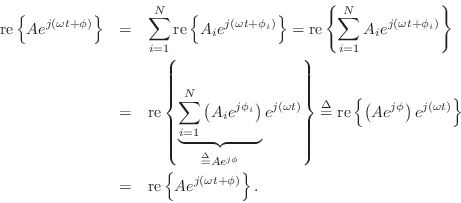Proof Using Complex Variables
To show by means of phasor analysis that Eq.![]() (A.2) always has a solution, we can express each component sinusoid as
(A.2) always has a solution, we can express each component sinusoid as

Thus, equality holds when we define
Since
As is often the case, we see that the use of Euler's identity and complex analysis gives a simplified algebraic proof which replaces a proof based on trigonometric identities.
Next Section:
Phasor Analysis: Factoring a Complex Sinusoid into Phasor Times Carrier
Previous Section:
Proof Using Trigonometry





















